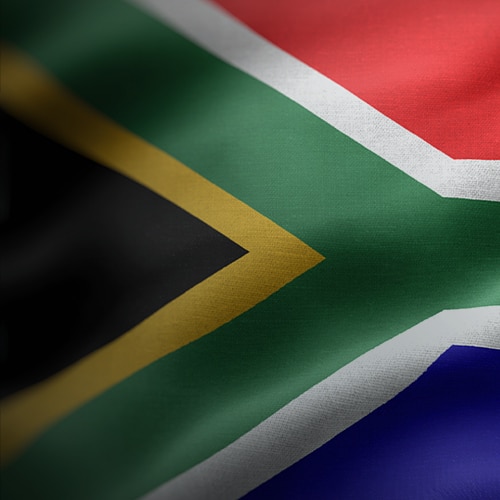Coffee Table Economics (CTE) with Anchor, written by Casey Sprake, is published periodically and offers a thoughtful mix of research, analysis, and commentary. Covering everything from inflation and central bank dynamics to global market moves and socio-political events, CTE distils the forces shaping the economy into insights that are both accessible and easy to digest – making sense of the complex so you do not have to.
Executive summary
In this week’s edition, we highlight the following:
- SA exits the FATF grey list: A vote of confidence for financial integrity. After 18 months of reform, South Africa (SA) has officially been removed from the Financial Action Task Force (FATF) grey list — a move that not only restores confidence in the country’s financial systems but also strengthens investor sentiment and underscores renewed institutional integrity. Still, credibility is fragile. The challenge now lies in maintaining momentum through consistent enforcement, continued transparency, and genuine political accountability.
- Still chasing 3%: Inflation holds steady, but the balancing act continues. Inflation remains steady but uneven — a reminder that SA’s disinflation journey is far from over. While food and global grain costs are easing, sticky service prices and rising rentals hint at underlying demand-side pressure. The SA Reserve Bank’s (SARB) push toward its 3% anchor remains intact, but patience, not optimism, still guides the policy path.
- Harvesting gains while growth lags: SA’s agricultural trade in 2Q25. SA’s agricultural sector continued to outperform in 2Q25, bucking broader export stagnation with stronger foreign earnings, improved trade balances, and a growing presence in key global markets. Yet policy uncertainty, logistics bottlenecks, and rising trade barriers underscore the need for structural reform to sustain the momentum.
SA exits the FATF grey list: A vote of confidence for financial integrity
SA has officially been removed from the FATF grey list, marking the culmination of a rigorous 18-month reform process aimed at strengthening the country’s anti-money-laundering and counter-terrorism-financing (AML/CTF) frameworks. The announcement, made following the FATF’s October Plenary, represents a meaningful milestone for policymakers and markets alike- a signal that SA’s efforts to rebuild the integrity of its financial system are gaining international recognition.
Greylisting occurs when the FATF, the global standard-setter for combating financial crime, places a country under “increased monitoring.” It is effectively a watchlist for jurisdictions whose regulatory and enforcement frameworks contain weaknesses that could allow illicit activity to slip through the cracks. While not as severe as blacklisting (a designation reserved for the world’s highest-risk jurisdictions such as Iran and North Korea), greylisting carries real economic consequences. It can damage a country’s reputation, raise compliance costs for banks, and deter investment by adding layers of due diligence to every cross-border transaction. SA’s inclusion in February 2023 followed long-standing vulnerabilities that took root during the state capture era, when institutional erosion and gaps in enforcement made the financial system susceptible to abuse.
Getting off the list required a “whole-of-government effort” and, perhaps most importantly, coordination across multiple institutions that had often worked in silos. Over the past year and a half, the National Treasury, the Financial Intelligence Centre (FIC), the South African Revenue Service (SARS), the SARB, and the National Prosecuting Authority (NPA) all played pivotal roles in addressing the FATF’s 20 recommended actions. Parliament passed the Anti-Money Laundering and Counter-Terrorism Financing Amendment Act (2022), strengthening the legislative base for financial transparency, beneficial ownership disclosure, and compliance. SARS implemented new systems to track company ownership and cross-border cash flows, while digital traveller declarations improved monitoring of large cash movements. The FIC enhanced reporting standards and collaboration with banks, while the NPA and SARB focused on converting intelligence into actual enforcement and prosecution outcomes. By September 2025, 15 of the 20 identified deficiencies had been addressed – a level of compliance that gave the FATF sufficient confidence to remove SA from the list.
Delisting does not by any means signal the end of scrutiny; instead, it marks the beginning of sustained oversight. The FATF will continue to monitor SA’s progress as part of its next round of Mutual Evaluations, scheduled to begin in early 2026 and conclude in 2027. Over this period, SA must show that its reforms are not merely procedural but effective in practice, through successful investigations, prosecutions, and sanctions related to money-laundering and terrorist-financing cases. The economic significance of this development extends beyond symbolism. While the greylisting did not cripple financial activity, it imposed a subtle but meaningful trust deficit in SA’s cross-border dealings. Global banks and investors responded with caution, subjecting local transactions to additional scrutiny and raising compliance costs. With the country’s removal from the list, the cost of doing business with SA is expected to decline as confidence and ease of transacting improve. Banks will face fewer restrictions in correspondent relationships, importers and exporters should experience smoother payment flows, and investors will see reduced administrative friction when moving capital into local markets.
More broadly, the move enhances sovereign credibility. It supports perceptions of institutional recovery and governance reform- themes that matter deeply to rating agencies, international lenders, and investors assessing long-term risk. Over time, this credibility boost could help narrow SA’s risk premium, improve capital market access, and provide some modest support to the rand. For the private sector, the implications are equally constructive. Improved financial integrity and global standing can attract foreign direct investment (FDI) into industries like renewable energy, manufacturing, and digital finance- areas where SA has been seeking external funding but where investor hesitation has lingered amid reputational concerns.
The bottom line
Beyond the technical victory, SA’s exit from the grey list sends a broader message: reform is possible when institutions align behind a shared goal. The process required coordination across political, fiscal, and enforcement domains – something that has often eluded the state in other policy areas. Still, credibility is fragile. The challenge now lies in maintaining momentum through consistent enforcement, continued transparency, and genuine political accountability. Sustaining this progress will be critical to ensuring SA never finds itself back under increased monitoring. For now, however, the delisting represents a timely and positive development that reaffirms SA’s standing in the global financial community and provides a modest but welcome tailwind for the economy.
Still chasing 3%: Inflation holds steady, but the balancing act continues
SA’s consumer inflation edged slightly higher in September, with headline CPI rising to 3.4% YoY from 3.3% in August. On the surface, it is a modest move- but beneath it lies a familiar tug-of-war within the inflation basket. Some categories are showing renewed price pressures, while others are easing off, leaving overall inflation comfortably contained within the SARB’s target range.
Inflation picked up most notably in transport and restaurants & accommodation, while food and non-alcoholic beverages (NAB), alcohol & tobacco, and household furnishings slowed down. Within the food basket, September told a story of contrasts: meat and maize meal prices stayed stubbornly high, while milk, eggs, and rice offered consumers some relief. This patchiness reflects the interplay of seasonal and structural dynamics- from lingering supply constraints in the livestock sector to easing global grain prices and improving trade flows. September is also a busy month for Stats SA’s quarterly price surveys, particularly in the housing category, where rental inflation drew attention. After a sluggish post-COVID-19 recovery, rentals are rising again, suggesting that the residential market is slowly finding its feet.
Core inflation, which strips out the volatile price categories of food, fuel, and energy, ticked up slightly to 3.2% – a subtle sign that underlying price pressures are stabilising. Meanwhile, food inflation continued to cool, falling to 4.4% from 5.2% the month before. With food and NAB making up nearly 17% of the CPI basket, this moderation shaved its contribution to headline inflation down to 0.8 ppts. Globally, food price trends reflect a similar story. The FAO Food Price Index climbed just 3.4% YoY, suggesting that the post-pandemic price storm in agricultural markets is gradually settling. Nonetheless, that average hides sharp internal differences. SA’s meat inflation remains the standout- at 11.7% it is the highest since early 2018. Chicken prices are moving more moderately, up 5%, but remain underpinned by avian flu outbreaks, feed cost pressures, and logistics bottlenecks. Looking ahead, La Niña conditions forecast for the upcoming summer could improve agricultural yields and help ease food prices into early 2026. Still, high input costs, erratic weather, and ongoing energy constraints are keeping the risks tilted slightly to the upside.
Transport inflation remained a steady anchor, recording its thirteenth consecutive month of deflation at –0.1% YoY. The small petrol price cut in September (–ZAc4/litre) had little impact, and the October adjustment is unlikely to shift the dial either. This persistent transport-related deflation has been quietly instrumental in keeping headline inflation stable and within the SARB’s comfort zone. The broader inflation picture looks encouraging, but it leaves the SARB facing a delicate choice. Inflation expectations have been drifting lower – a trend policymakers welcome – but most surveys and forecasts still sit above the Bank’s emerging 3% anchor (the lower end of its official 3%–6% range). The upcoming Bureau of Economic Research (BER) Inflation Expectations Survey (due after the November Monetary Policy Meeting [MPC] meeting) will be closely watched for signs that this disinflationary trend is filtering through to households and businesses. Some market participants believe the SARB could take a “leap of faith” and start cutting rates early, betting that expectations will keep falling. However, the SARB has traditionally always preferred data over daring and will likely wait for more substantial evidence that inflation is firmly tracking toward 3% before easing policy further.
The bottom line
The rates market is still leaning toward optimism. Forward rate agreements (FRAs; financial contracts used to speculate on short-term interest rate movements) are pricing in roughly a 60% chance of a 25-bpt cut at the SARB’s final MPC meeting of the year. If that does not materialise, the first rate move could slip into early 2026, likely in January or March. Ultimately, the decision will hinge on whether the SARB prioritises the credibility of its 3% target or opts to signal confidence in the disinflation path already underway. For now, prudence – rather than premature optimism- appears to be the guiding principle.
Harvesting gains while growth lags: SA’s agricultural trade in 2Q25
SA’s latest trade data paints a picture of quiet resilience in an otherwise subdued economy. While total national exports have been flatlining around R500bn since 2021, the agricultural sector once again stood out as a bright spot — expanding export value, diversifying markets, and strengthening the country’s external balance at a time when broader trade growth remains limited. According to the Bureau for Food and Agricultural Policy’s (BFAP) Q2 2025 Trade Brief, agricultural exports rose by around 8% YoY to R71.5bn – 60% higher than in the same quarter of 2020 and almost double the value recorded pre-pandemic in 2019. Imports, meanwhile, fell by 6%, marking the first decline in 2Q25 agricultural imports in five years and contributing to a healthier net-trade position.
Fruit and nuts (led by citrus, apples, and pears) continued to dominate, accounting for nearly 40% of export value. Beverages, including wine and ethanol, added modest gains, while cereals exports softened after last year’s weather-boosted bumper crop. On the import side, the picture was notably weaker. Wheat and rice imports declined by roughly 26%, and meat imports (particularly poultry) fell by about 40% amid ongoing avian flu restrictions. Trade geography also tells an evolving story. The Southern African Development Community (SADC) remains SA’s largest agricultural export destination. Still, notable growth was recorded in shipments to the EU and the US — up 18% and 19%, respectively. This diversification is encouraging, as it reduces reliance on regional markets. Yet new risks are emerging: Washington’s decision to impose a 30% tariff on selected SA agricultural exports from August 2025 could test the resilience of this progress.
Beyond the numbers, the economic implications are clear. In a context of muted national trade, agriculture’s outperformance is helping to steady the external accounts and support the rand. Rising export receipts and lower imports provide a valuable buffer against global headwinds. In contrast, the dominance of high-value fruit and nut exports reflects a gradual shift up the value chain — away from bulk commodities toward more profitable, employment-intensive products. This trend carries broader economic benefits. Higher-value exports support investment in logistics, cold storage, and processing infrastructure, extending agriculture’s contribution beyond the farm gate into manufacturing and services. The spillover into rural employment and incomes is equally essential, helping stabilise communities and inject cash into local economies.
Still, sustaining this momentum will not be easy. Persistent structural bottlenecks -from port congestion and rail inefficiencies to rising input and transport costs- continue to erode competitiveness and limit the pace of export expansion. These logistical constraints act as a hidden tax on trade, often offsetting the productivity gains achieved on farms and in processing facilities. Without faster reform and investment in transport and port infrastructure, the sector’s full potential will remain constrained. Global dynamics are also shifting. Protectionist measures, disease-related trade disruptions, and climatic volatility pose ongoing threats. The US tariff move illustrates how quickly access can narrow in an increasingly fragmented global trading landscape. To navigate this environment successfully, SA will need both diplomatic agility and strong domestic capacity, thereby ensuring that its agricultural products remain competitive, compliant, and market-ready.
The bottom line
Agriculture’s importance stretches beyond trade statistics. As one of SA’s largest employers and a key driver of rural development, the sector’s performance has direct implications for livelihoods, fiscal health, and social stability. When agricultural exports thrive, the benefits ripple widely- supporting employment, attracting investment, and reinforcing confidence in SA’s broader economic story. For now, the takeaway from BFAP’s latest data is encouraging amid slow overall growth; agriculture continues to harvest gains, proving itself as one of the few sectors capable of lifting SA’s trade performance. However, turning this momentum into sustainable, broad-based growth will require more than strong harvests — it will demand coordinated policy, infrastructure investment, and trade diplomacy that keeps pace with a rapidly changing global economy.




